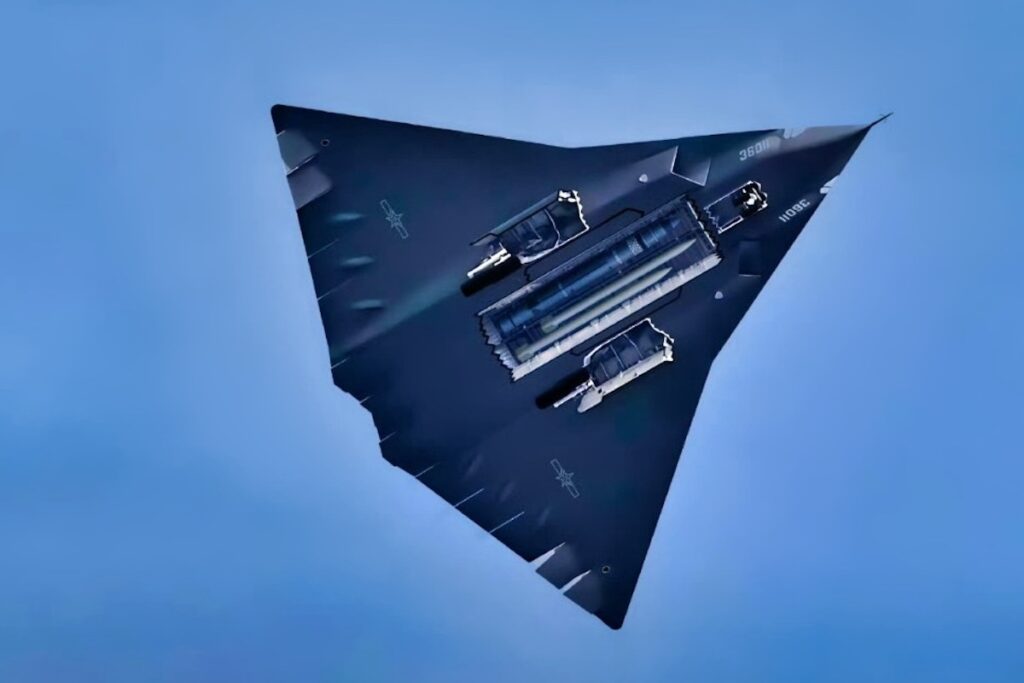The Growing Threat
China’s J-36 sixth-generation fighter is flying under the radar—literally. We’re starting to see some movement in China’s air force with test flights and a few public glimpses, but they’re keeping things low-key. This isn’t the usual ‘look at us’ behavior; China prefers to let others catch up, then drop the bomb when it’s time. It’s a classic move from a country that’s been known for surprising the world with major advancements in defense tech.
What we know so far? The J-36 is a big deal. It’s not just another version of the J-20. It’s different—leaner, meaner, and probably far more capable.
What We Can Expect
Early footage and reports suggest a tailless design, something we’ve seen a lot in stealth aircraft for reducing radar signatures. It’s got a clean, low-profile look—everything you’d want for a fighter that can stay hidden from enemy radar and sensors.
Here’s what the J-36 is likely packing:
- Stealth all the way around: Expect radar cross-section (RCS) reductions, but also thermal and noise management to stay under the radar, literally.
- AI-driven tech: It’s more than just a manned fighter. China is likely working on systems that can collaborate with drones and unmanned aircraft—helping create a more flexible, adaptable air combat force.
- Cutting-edge sensors: The J-36 will likely have next-gen avionics, giving it superior awareness in the sky, and the ability to detect and counter threats quickly.
- Powerful engines: Increased speed and range are key for any next-gen fighter. The J-36 should be able to stay in the air longer and cover more ground, with less of a chance of being intercepted.
This isn’t just about building a good fighter; China is creating an entire combat system that blends manned and unmanned assets. It’s a far-reaching vision of how air combat might look in the future.
What Does This Mean for Europe?
The J-36 isn’t just a Chinese problem—it’s a global one. As Europe works on projects like FCAS and GCAP, we’re seeing delays, high costs, and coordination challenges. Meanwhile, China is quietly working to leap ahead. Europe needs to be aware of the shift happening in global defense.
Here’s what could come from this:
- Europe will have to ramp up R&D for next-gen tech, especially AI, stealth, and unmanned systems. Staying competitive means staying innovative, and that won’t come easy.
- Air superiority will need a re-think. The J-36’s integration with drones and other platforms makes it clear that the future of air combat will be multi-dimensional. European nations will need to rethink how they approach joint operations and tech development.
- We may also see a shift in defense markets. China’s capability could redefine what other nations want in their fighter jets, particularly in markets outside the US and Europe.
Europe can’t afford to sit back and hope this doesn’t affect them. It’s not about racing against China, but about staying sharp and ready for whatever comes next.
A Balanced Response, Not a Panic Button
Yes, the J-36 is still a ways off from full operational readiness, but China’s intentions are clear. This is a wake-up call—not to panic, but to ensure Europe isn’t left behind in the race for air dominance.
Europe has time, but that time isn’t infinite. The next generation of fighters is already on the drawing board, and if the J-36 is any indicator, the world is about to see some big changes in how we think about air warfare.
